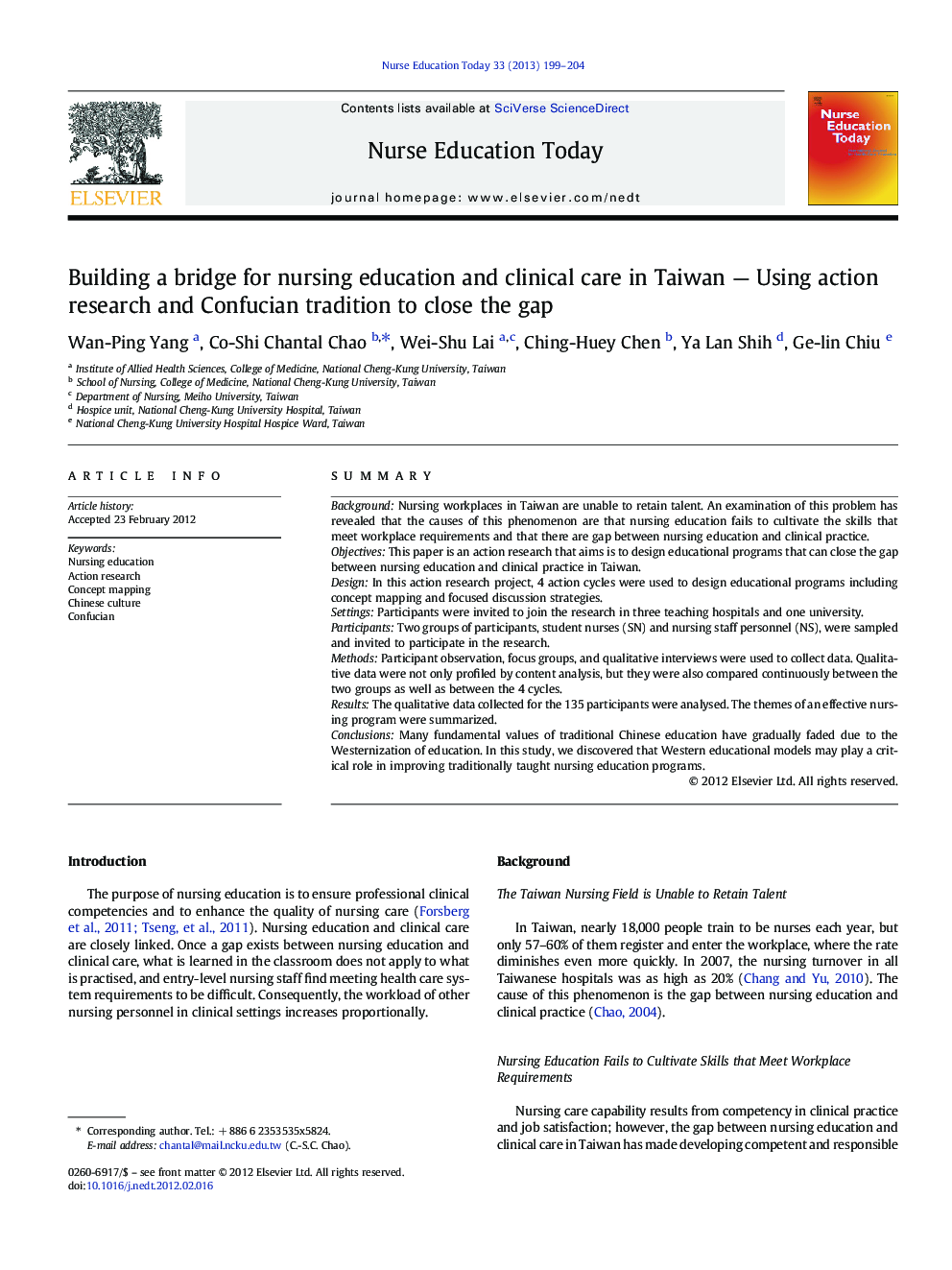| Article ID | Journal | Published Year | Pages | File Type |
|---|---|---|---|---|
| 368651 | Nurse Education Today | 2013 | 6 Pages |
SummaryBackgroundNursing workplaces in Taiwan are unable to retain talent. An examination of this problem has revealed that the causes of this phenomenon are that nursing education fails to cultivate the skills that meet workplace requirements and that there are gap between nursing education and clinical practice.ObjectivesThis paper is an action research that aims is to design educational programs that can close the gap between nursing education and clinical practice in Taiwan.DesignIn this action research project, 4 action cycles were used to design educational programs including concept mapping and focused discussion strategies.SettingsParticipants were invited to join the research in three teaching hospitals and one university.ParticipantsTwo groups of participants, student nurses (SN) and nursing staff personnel (NS), were sampled and invited to participate in the research.MethodsParticipant observation, focus groups, and qualitative interviews were used to collect data. Qualitative data were not only profiled by content analysis, but they were also compared continuously between the two groups as well as between the 4 cycles.ResultsThe qualitative data collected for the 135 participants were analysed. The themes of an effective nursing program were summarized.ConclusionsMany fundamental values of traditional Chinese education have gradually faded due to the Westernization of education. In this study, we discovered that Western educational models may play a critical role in improving traditionally taught nursing education programs.
